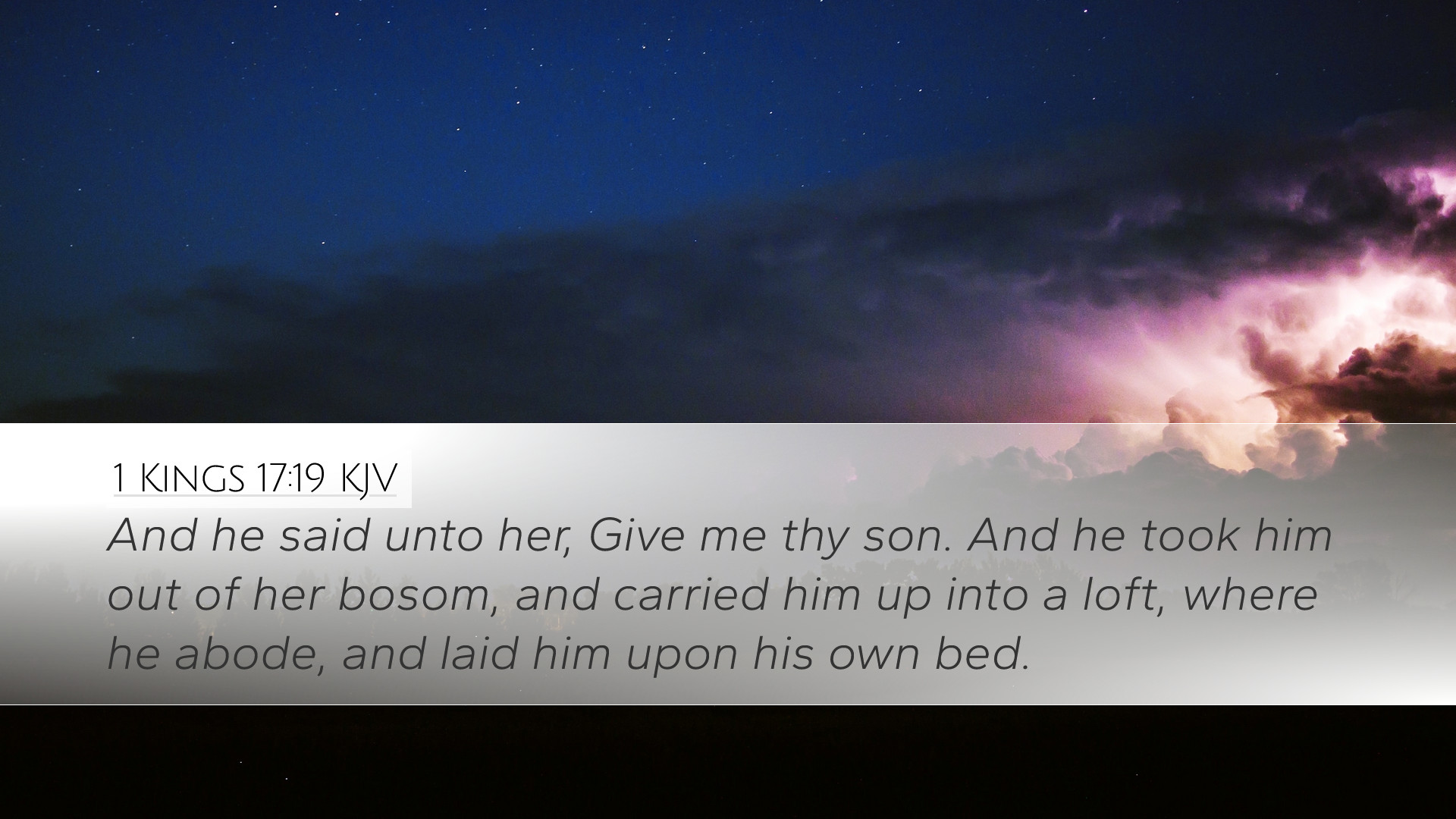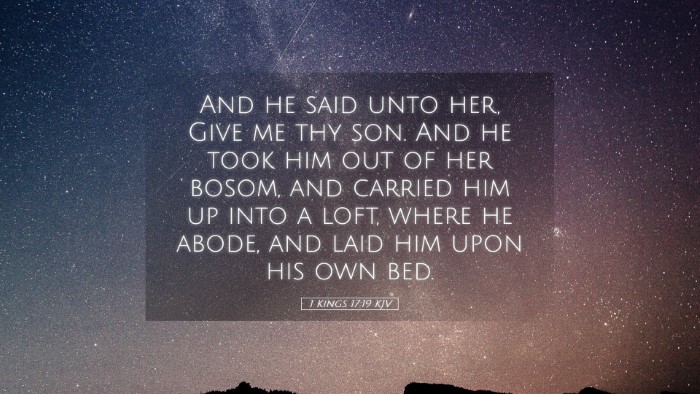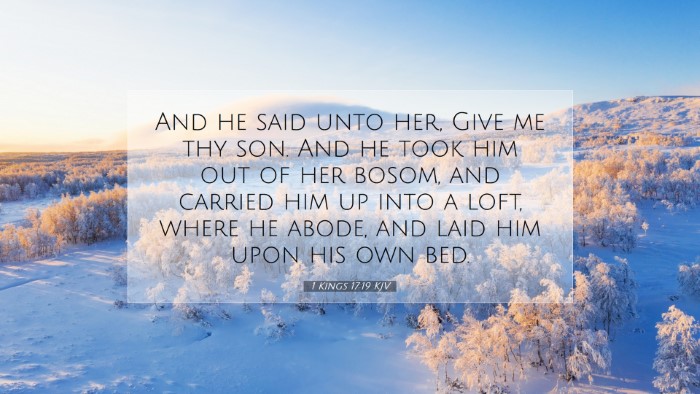Commentary on 1 Kings 17:19
Verse: “And he said unto her, Give me thy son. And he took him out of her bosom, and carried him up into a loft, where he abode, and laid him upon his own bed.” - 1 Kings 17:19
Introduction
This verse is nestled within the narrative of Elijah's miraculous ministry in the time of King Ahab of Israel. It captures a significant moment wherein the prophet encounters a widow in Zarephath whose son has died. The subsequent events highlight themes of faith, divine intervention, and the power of God to revive and restore life.
The Context of the Verse
1 Kings 17 narrates the story of Elijah, God’s prophet, who is fed by ravens and then sent to Zarephath during a severe drought. Here, he meets a widow who is at the brink of despair due to famine. Elijah’s request for her to prepare him a cake first is a test of her faith, and her obedience leads to a miraculous provision of flour and oil that does not run out. The widow’s son later falls ill and dies, prompting this critical moment of rescue by the prophet.
Insights from Public Domain Commentaries
1. Matthew Henry's Commentary
Matthew Henry emphasizes the compassion of Elijah as he takes the child from the grieving mother. He notes that this act demonstrates the deep relational connection Elijah forms with the widow and her family. Henry reflects on the humanity of Elijah’s actions, guiding readers to understand that prophets are not devoid of empathy and engagement with human sorrow.
2. Albert Barnes' Notes on the Bible
Albert Barnes focuses on the significance of the phrase "Give me thy son." He interprets this as a moment of trust and surrender from the widow, highlighting the act of giving one’s most cherished possession—representative of one's deepest grief and reliance upon God. Barnes posits that Elijah’s actions reflect not only the power of God but also a model for pastoral care, wherein leaders take on the burdens of their congregants.
3. Adam Clarke's Commentary
Adam Clarke delves into the details of Elijah’s act of carrying the boy to the loft, noting that the loft represents a place of separation, where God often meets with individuals. He suggests that by taking the child away from the mother’s bosom, Elijah is leading her through a process of faith, indicating a spiritual ascent. Clarke also asserts that the loft symbolizes a higher perspective where divine encounters happen, indicating to readers that in our moments of crisis, God calls us to rise above our circumstances to witness His works.
Theological Implications
The act of Elijah taking the child can be seen as a metaphor for Christ’s work in redeeming humanity. Just as Elijah intercedes and lifts the child to a higher place, Christ carries our burdens, giving life where there is death. This moment foreshadows the ultimate act of resurrection in the New Testament, emphasizing God’s sovereignty and compassion throughout human history.
Application for Ministers and Theologians
For pastors and theologians, this passage invites reflection on several critical areas:
- Empathy in Ministry: Like Elijah, ministers are called to embody compassion and understanding towards those experiencing grief and loss.
- Faith in Adversity: The widow's initial act of obedience can inspire congregants to trust God in seemingly hopeless situations.
- Divine Provision: This passage serves as a reminder of God’s providence, encouraging faith that God will provide even when resources appear depleted.
- Intercessory Prayer: Elijah’s actions model the significance of prayer and intercession in the face of death and despair.
Conclusion
1 Kings 17:19 encapsulates profound theological truths and practical applications for believers. The narrative not only illustrates the miraculous power of God through His prophet but also provides a template for understanding suffering, faith, and divine intervention. As ministers, scholars, and students of the scripture engage with this passage, they are invited to explore the depth of God's compassion and the call to rise above life's challenges, trusting in His ability to bring restoration and life.


